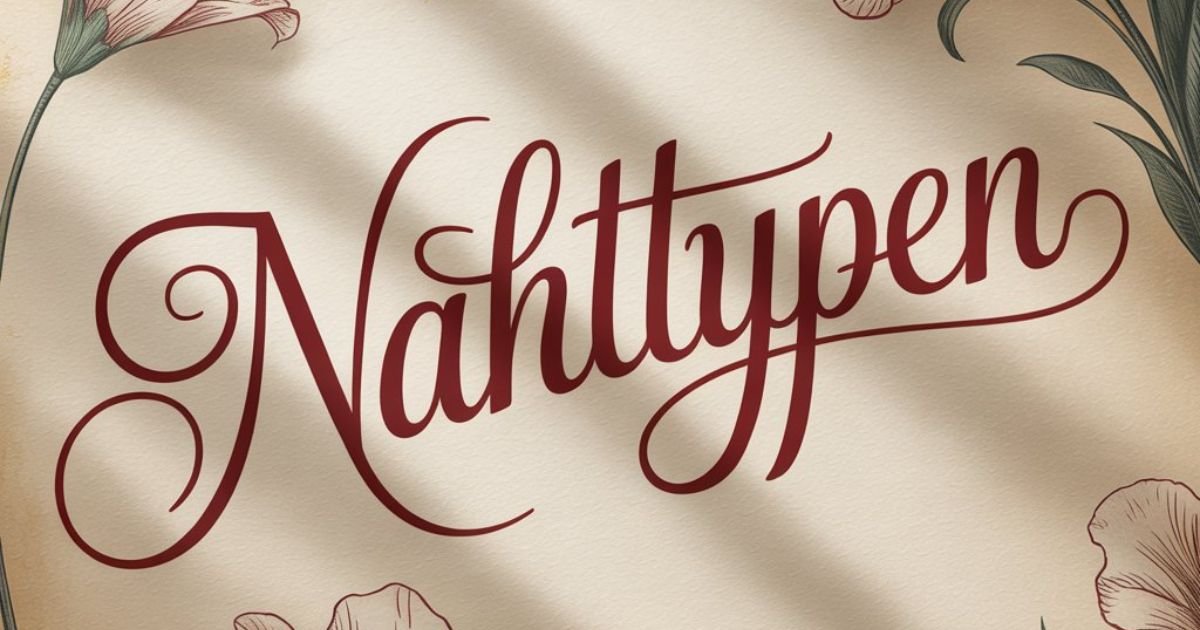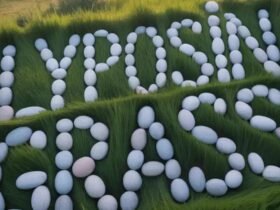When it comes to sewing, mastering the art of Nahttypen (seam types) is essential for achieving professional-looking results. Whether you’re a beginner or a seasoned sewing enthusiast, understanding the different Nahttypen can make all the difference in your sewing projects. From basic seams to more intricate designs, each Nahttypen serves a unique purpose, enhancing both the durability and appearance of your garments.
Choosing the right seam type is crucial for the success of any project, as it affects everything from stitch quality to overall fabric performance. In this guide, we’ll explore the most common Nahttypen, how to select the right one, and how they impact your sewing experience.
What Are Nahttypen (Seam Types) and Why Do They Matter?
Nahttypen, or seam types, refer to the various ways of stitching two pieces of fabric together. Each Nahttypen serves a specific purpose, from joining fabric pieces to finishing edges and adding strength. Choosing the right Nahttypen for your fabric is crucial because it affects the stitch quality, durability, and appearance of the finished garment. Whether you’re making a pair of jeans or a delicate blouse, the right seam can enhance the overall look and functionality.
Understanding Nahttypen is also essential for preventing issues like fabric snags, skipped stitches, or weak seams. For example, using a plain seam on heavy-duty fabric could lead to seam failure, while a French seam could be perfect for delicate materials. By selecting the correct Nahttypen, you ensure that your sewing projects have a neat, polished finish and will last longer.
Common Types of Nahttypen and Their Uses
There are various Nahttypen that serve different purposes, and understanding their uses can help you make the best choice for your project. For example, a plain seam is the simplest and most common type, often used for everyday clothing. It’s perfect for joining two pieces of fabric together, but not the best for fabrics that need extra durability.

On the other hand, a French seam is ideal for delicate fabrics like silk or chiffon, as it provides a clean finish and prevents raw edges from fraying. A flat-felled seam, commonly used in jeans and denim garments, is extremely strong and helps maintain the fabric’s durability. Each Nahttypen has specific uses, and choosing the right one will depend on the fabric and intended use of your sewing project.
How to Choose the Right Nahttypen for Your Project
When deciding on the right Nahttypen, the first thing to consider is the fabric type. For lightweight fabrics like cotton or silk, you might want to use a French seam for a clean finish. For heavier fabrics like denim or canvas, a flat-felled seam will provide strength and durability. Knowing the characteristics of your fabric materials will guide you in selecting the correct Nahttypen.
Another important factor to consider is the needle selection. Different needles are designed for different Nahttypen. For instance, a ballpoint needle works best with knit fabrics, while a sharp needle is ideal for woven fabrics. Make sure to choose the right needle size and type to ensure smooth stitching and avoid issues like skipped stitches or fabric snags.
Common Mistakes with Nahttypen and How to Avoid Them
One common mistake many sewing enthusiasts make is using the wrong needle types or needle size for their fabric. Using a universal needle for all fabric types might work for some, but it’s not ideal for every project. For instance, a ballpoint needle is necessary when working with knit fabrics to avoid damaging them, while a sharp needle is essential for woven materials.
Another common mistake is not adjusting the thread tension correctly. Tension issues can lead to uneven stitches or even fabric puckering. Always check your machine’s needle tension and thread tension settings before starting your project. By avoiding these mistakes, you’ll achieve better stitch quality and make your sewing projects more enjoyable and successful.
Tools You Need for Perfect Nahttypen
To achieve perfect Nahttypen, having the right sewing tools is essential. Sewing machines are the primary tool you’ll need, but you also require the correct needles, threads, and sewing machine lubrication to keep your machine in top condition. Needle maintenance is just as important as having the right needle for your project. Be sure to regularly check your needles for damage and replace them when necessary.
Additionally, sewing machine cleaning is crucial for maintaining performance. Dust and lint can accumulate inside the machine, which may affect the seam quality. Regularly clean your machine and oil it as recommended in the machine manual to keep it running smoothly. These small steps help prevent many common issues and ensure high-quality results.
How Nahttypen Affect the Durability and Appearance of Your Clothing
The choice of Nahttypen can significantly impact the durability and appearance of your finished garment. For instance, a double-stitched seam is perfect for heavy-duty fabrics like denim, as it provides extra strength. If you’re working on a delicate project like a blouse, you might opt for a French seam, which provides a delicate finish and prevents fraying.

In addition to enhancing the appearance of your project, Nahttypen also affect its overall lifespan. A poorly selected seam type can result in seams coming undone or fabric tearing, especially under stress. The right Nahttypen helps distribute the strain across the fabric evenly, leading to a more durable garment that will last longer.
Caring for Garments Based on Nahttypen
After you’ve completed your sewing project, it’s important to properly care for your garments. Different Nahttypen require different care. For example, garments with a French seam should be hand-washed or washed in a gentle cycle to prevent damage. On the other hand, heavier garments with flat-felled seams can withstand more robust washing conditions.
Fabric care is also crucial to maintaining the stitch quality of your garments. Always follow the care instructions specific to your fabric type and Nahttypen. This ensures that your garments retain their beauty and durability for a long time.
Nahttypen in Fashion: Trends and Innovations
As fashion evolves, so do the ways in which Nahttypen are used. New sewing techniques and sewing machines have introduced more intricate and creative ways to incorporate Nahttypen into designs. For example, Nahttypen are now being used as a decorative element in some high-fashion collections, where the seams themselves become a part of the design aesthetic.
Innovations in sewing machine technology have also made it easier to create unique and high-quality Nahttypen. Digital sewing machines can now perform complex stitches that were once only possible by hand, allowing designers to experiment with new seam types and finishes.
Fun Facts About Nahttypen and Their Global Impact
Nahttypen are not just functional; they have cultural significance around the world. For instance, the French seam originated in Europe and is widely used in couture sewing for its elegant finish. Meanwhile, overlock seams are a staple in mass-produced clothing due to their ability to finish edges quickly and efficiently.

Different countries and cultures have unique approaches to sewing, and Nahttypen reflect that diversity. In some regions, hand-stitched seams are considered more valuable than machine-made ones, showcasing the artistry behind each stitch. Understanding these global practices can help you appreciate the rich history and significance of Nahttypen in the sewing world.
The Future of Nahttypen in Textile and Fashion Design
Looking to the future, Nahttypen will continue to evolve as technology and fashion trends change. Advances in sustainable fashion are encouraging the development of Nahttypen that are not only functional but also eco-friendly. For example, Nahttypen that minimize fabric waste or require less energy to produce are gaining popularity.
In addition, as the fashion industry becomes more technology-driven, we may see Nahttypen being created with 3D printing and digital fabric manipulation. These innovations will offer even more possibilities for creativity and sustainability in sewing.
Conclusion
In conclusion, mastering Nahttypen is essential for achieving professional results in your sewing projects. Whether you’re a beginner or an experienced sewing enthusiast, understanding the different seam types, their uses, and the proper techniques can elevate your work. By choosing the right Nahttypen for your fabric, maintaining your sewing machine, and caring for your garments, you’ll ensure that your sewing projects are not only beautiful but durable as well.
FAQs
1. What are Nahttypen (seam types)?
Nahttypen, or seam types, refer to different ways of stitching fabric pieces together, each serving specific purposes like durability or aesthetic finishes.
2. How do I choose the right Nahttypen for my project?
Select the right seam type based on your fabric’s weight, stretch, and the durability needed for your project.
3. Can I use the same needle for all fabric types?
No, different fabrics require specific needle types and sizes for optimal stitching.
4. Why is proper sewing machine maintenance important?
Regular maintenance ensures your sewing machine runs smoothly, preventing issues like skipped stitches and poor seam quality.
5. How can I avoid tension issues while sewing?
Check your thread tension settings, use the correct needle and thread, and clean your sewing machine regularly.






Leave a Reply